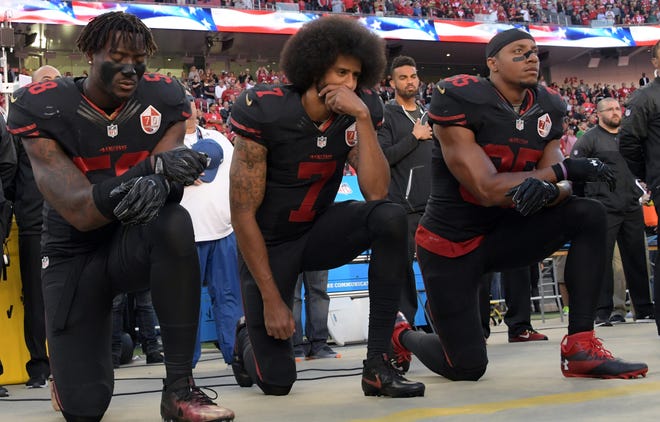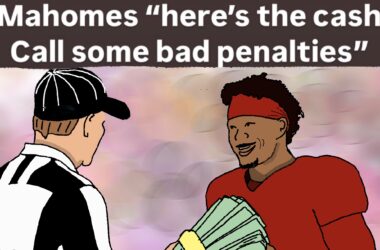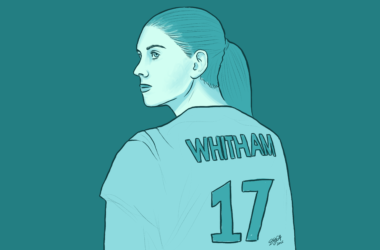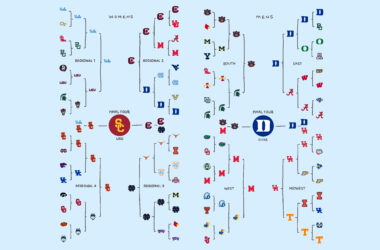Content warning: Racial discrimination and hate speech
When thinking of sports, many people like to remember the epic highlights and the feel-good comeback stories. What is often overlooked is the systematic oppression that underrepresented groups have faced in sports over the years. Black people in particular have faced significant racial barriers in sports, and the fight is still ongoing.
Baseball is one of numerous sports with a deep-rooted legacy of racial segregation. Although Jackie Robinson was the first Black player in Major League Baseball, Moses Fleetwood Walker was actually the first Black professional player in the sport. Fleetwood Walker was the catcher for the Toledo Blue Stockings in the American Association of professional baseball. He played minor league baseball until 1889 when the “Color Line” was enforced and would remain in effect until the arrival of Jackie Robinson in 1946. The Color Line excluded Black players from Major League Baseball and its affiliated Minor Leagues.
Jackie Robinson would break the colour barrier permanently, although racism in baseball was still rampant. In 1946, Robinson joined the Montreal Royals, the Brooklyn Dodgers’ second team. He was promoted to the Dodgers in 1947 and became the first Black player in the MLB.
Despite Robinson’s exceptional talents, he received anonymous letters threatening his life, violence against his wife, and abduction of his son. The senders of these hateful messages were not limited, however, to baseball fans. The Philadelphia Phillies’ manager and players shouted racial slurs at him when he was at bat and the St. Louis Cardinals threatened to go on strike if a Black player was allowed to play in the major leagues. Even Robinson’s own team rejected him at first until his achievements and attitude forced them to rethink their racism. He was named National League MVP in 1949 after leading the league in hitting with a .342 average, 37 stolen bases, and a career-high 124 RBI.
Robinson was forced to prove to the professional baseball community that he belonged there. He had to be the best in order to overcome the prejudices held by most players and non-Black fans.
Today, only eight per cent of Major League players are Black. Derek Jeter, the manager of the Miami Marlins and former shortstop for the Yankees, is the only Black manager in the MLB. This issue of representation is not just prevalent in the MLB—numerous professional sports leagues are seriously lacking representation.
The NHL runs a campaign called “Hockey is for Everyone,” yet the league has a history of racial exclusion and violent ridicule from fans. In 1958, when Willie O’Ree stepped on the ice for the Boston Bruins in a game against the Montreal Canadiens, he became the first Black player in NHL history, over 40 years after the league’s founding. Throughout his career, he faced racial abuse from fans, players, and coaches. He detailed his experiences in an interview during the 22nd Anti-Defamation League conference in Boston.
“Every time I went to the ice, I was faced with racial slurs because of my colour, and my brother taught me names will never hurt you unless you let them,” O’Ree said. “I had black cats thrown on the ice and told me to [go] back to the cotton fields and pick cotton.”
Racial abuse in the NHL is not just an issue of the past. In 2011, when Wayne Simmonds was playing for the Philadelphia Flyers, he had a banana thrown at him by a Detroit Red Wings fan in an exhibition game in London, Ontario. In 2012, after Washington Capitals forward Joel Ward scored an overtime winner, knocking the Bruins out of the playoffs, he was bombarded with racist abuse from Boston fans on social media. Even this year, when New York Rangers prospect K’Andre Miller participated in a question and answer session with fans on Zoom, he was repeatedly harassed with racist taunts. As much as the NHL wants to believe that “hockey is for everyone,” they continue to facilitate anti-Black racism, proving that professional hockey, even today, does not have the best interest of racialized players in mind.
The NFL has had perhaps the most public recent protests regarding police brutality and the oppression of BIPOC. In 2016, 49ers quarterback and activist Colin Kaepernick knelt during the national anthem in solidarity with marginalized communities that did not have a platform to speak out about racial oppression. This came after Kaepernick was seen sitting during the anthem in the preseason games. When confronted by the media, he explained that he would not stand until the anthem represented something to be proud of.
“This stand wasn’t for me,” Kaepernick said. “This is because I’m seeing things happen to people that don’t have a voice, people that don’t have a platform to talk and have their voices heard, and effect change. So I’m in the position where I can do that and I’m going to do that for people that can’t.”
Needless to say, Kaepernick’s resistance was met with criticism from every corner of the sporting world. In an interview with ESPN, Saints quarterback Drew Brees expressed his discontent with Kaepernick’s actions.
“[T]here’s plenty of other ways that you can [speak on important issues] in a peaceful manner that doesn’t involve being disrespectful to the American flag,” Brees said.
Indeed, Kaepernick’s actions resulted in comments about him being unpatriotic, anti-American, or anti-military. NFL Commissioner Roger Goodell also disagreed with Kaepernick’s kneeling during the anthem, deeming the flag to be sacred and kneeling to be unpatriotic.
The backlash due to Kaepernick kneeling and his subsequent explanations stems from the avoidance of racial discussions when political protests take place in sports. In a 2019 study that explored the responses of students to the NFL anthem protests, researchers found that some white students’ responses demonstrated an avoidance of race in political discussion, even when discussing racially-charged political protests.
Even the NBA, widely considered one of the world’s most progressive professional sports leagues, can do better to address racism and discrimination.
Ever since its founding in 1946, players in the NBA have faced racial injustice. In 1950, when Chuck Cooper became the first Black player to be drafted into the NBA, fans believed that Cooper should not play in the NBA. In 1956, the Celtics drafted Bill Russell, who would be the first Black NBA superstar, winning 11 NBA Championships in his 13 year career. Throughout his career, however, Russell’s house was vandalized with graffiti of racial slurs, a burning cross, and defecation.
More recently, Marcus Smart, a point guard for the Boston Celtics, wrote an article in the playerstrib detailing the hate he has received from basketball fans, including a specific incident where a woman called Smart a racial slur in front of her young son.
Smart is not the only player to face racial violence and discrimination. Utah Jazz fans are known for using racial hate speech against Black players. One fan told Russell Westbrook to “get down on [his] knees like he used to,” while another fan repeatedly shouted derogatory terms at Westbrook before a playoff game in 2018.
Black representation in the NBA front-office is also severely lacking. While Black players make up 74.2 per cent of the NBA, there are only four Black head coaches and eight Black managers in the entire league of 30 teams. Although the NBA may be the most progressive league in the world in terms of player activism, Black representation is still desperately needed amongst team management.










This article makes no mention of the current status in terms of a statistical comparison with the past. Bringing up past failures without acknowledging progress is unbalanced journalism. Injustices in countries such as mine (Australia) are still occurring but are thankfully fewer every year. Articles such as this focus on a sad history that should not be forgotten, but will stimulate a fairer world.